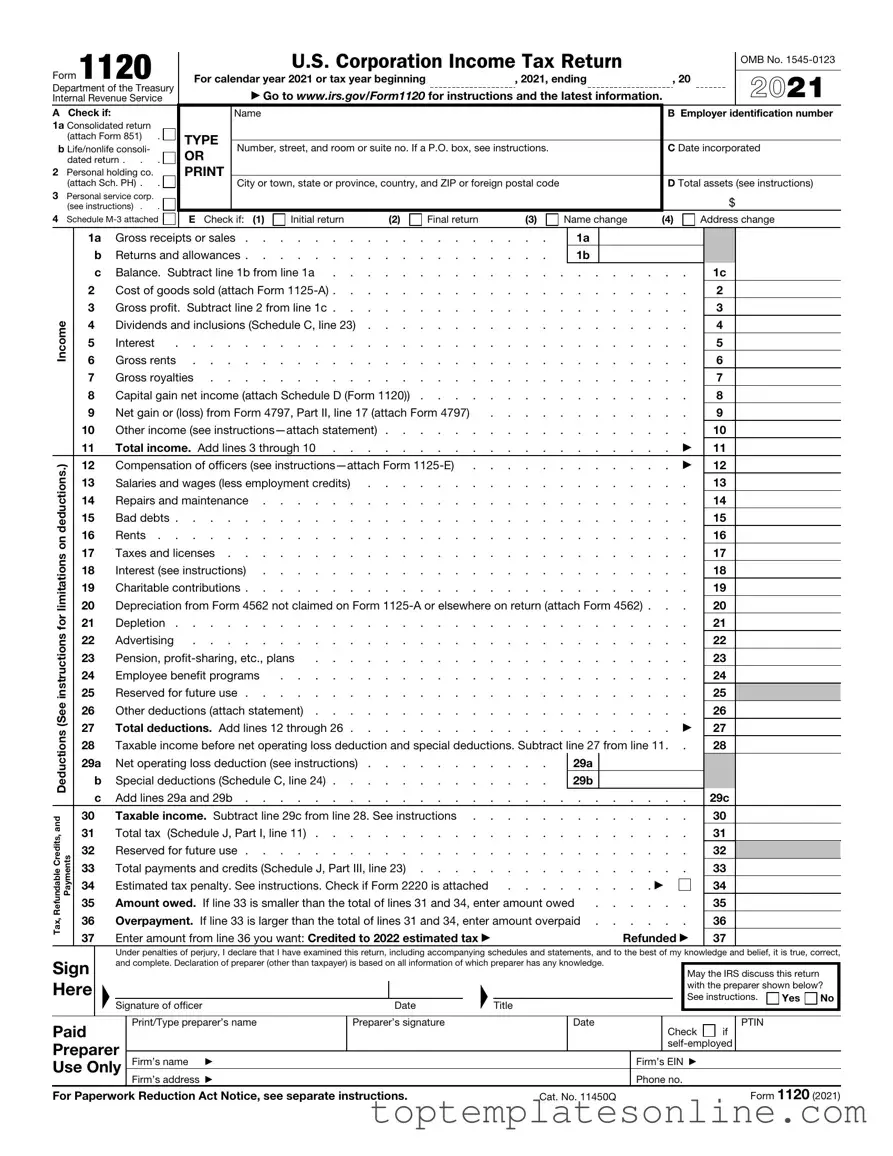The IRS 1120 form serves as a critical document for corporations operating within the United States, providing a comprehensive overview of their financial activities for the tax year. This form is used to report income, gains, losses, deductions, and credits, ultimately determining the corporation's tax liability. Corporations, including C corporations, must file this form annually, ensuring compliance with federal tax regulations. Key components of the form include sections for reporting gross receipts, cost of goods sold, and various deductions such as operating expenses and taxes. Additionally, corporations must disclose information regarding their shareholders and any dividends paid. Accurate completion of the IRS 1120 is essential, as it directly impacts the corporation's tax obligations and potential refunds. Understanding the intricacies of this form can aid corporations in effective tax planning and compliance, minimizing the risk of errors that could lead to penalties or audits.
